New Jersey Butterfly Club
A chapter of the North American Butterfly Association (NABA)
Coral Hairstreak
Satyrium titus
Identification: Very small—1.2”—about the size of a thumbnail, but just a bit larger than other Satyrium hairstreaks. Like most hairstreaks, almost never seen with wings open. Below: Gray-brown with a row of bright orange spots near edge of hindwing. Male’s FW appears longer and more pointed than female’s. Only hairstreak in NJ that does not have tails.
NJ Status and Distribution: Resident. Uncommon but widespread. The general sense among active field observers is that the species is declining, as most reports are of 1 or 2 individuals.
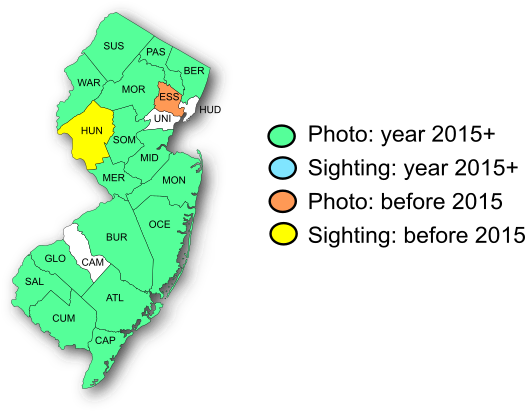
Habitat: Open areas, including openings in woodlands with the host plant.
Flight Period: One brood that flies from early June to early August. Extreme dates: North Jersey 6/8—8/13; South Jersey 6/3—7/14.
Caterpillar Food Plants: Black Cherry (Prunus serotina)—a common native tree of upland forest edges and hedgerows throughout NJ—and possibly other species in the genus Prunus.
Overwintering Stage: Egg.
Good Locations: Sunrise Mountain overlook in Stokes SF, Mountainside Park, Sandy Hook GNRA, Big Brook Park, Medford Leas, Colliers Mills WMA, Riverwinds Scenic Trail.
Comments: Coral Hairstreaks absolutely love Butterfly Weed. The bright orange blossoms of this plant match the color of the hindwing spots of the butterfly. Also shows fondness for Indianhemp. If you have Black Cherry trees in your yard or neighborhood, and plant Butterfly Weed in your garden, you just might attract this lovely butterfly. Groups of males have been observed making flight displays from areas of low vegetation (such as Northern Dewberry) near stands of nectar plants.
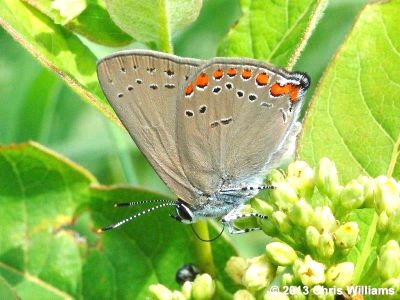
Male, Colliers Mills WMA, Ocean Co., NJ, 6/10/12, on Indianhemp.
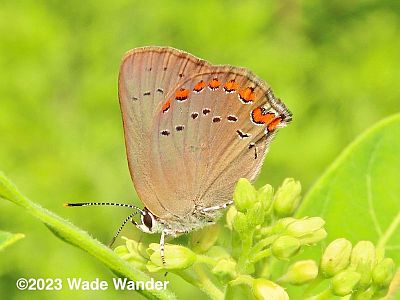
Female, Fredon Twp., Sussex Co., NJ, 7/1/20, on Indianhemp.
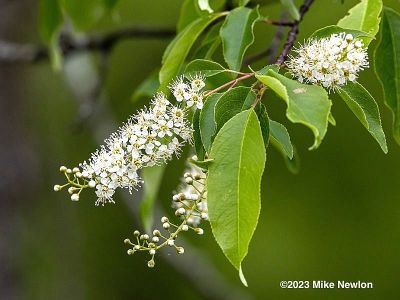
Black Cherry, one of the main caterpillar food plants for Coral Hairstreak.
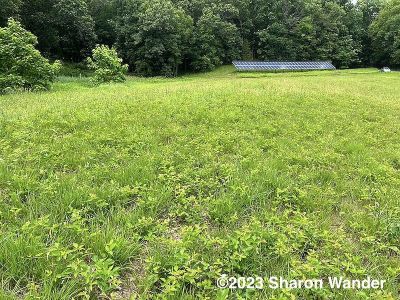
"Display grounds" for Coral Hairstreak. Over several years, numerous individuals have been observed perching on the low-growing grasses, dewberry, and goldenrod rosettes on this low, dry ridge that is within a few yards of a dense stand of Indianhemp and Common Milkweed, and engaging in the spiraling “dogfights” that are typical of hairstreaks seeking mates.